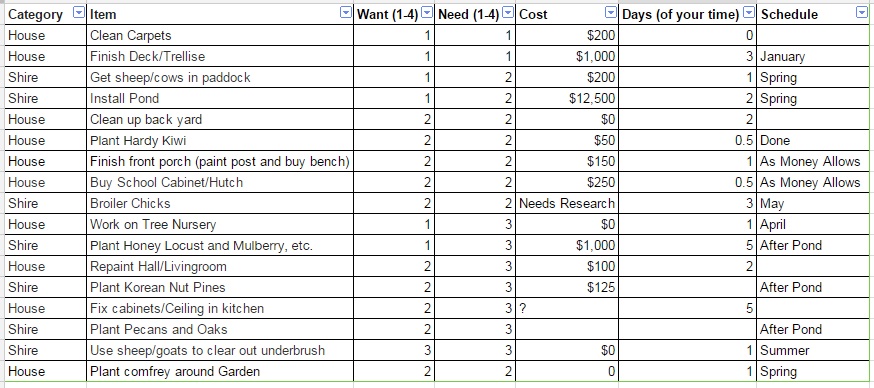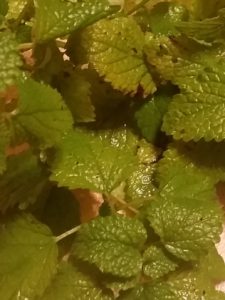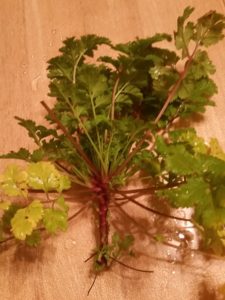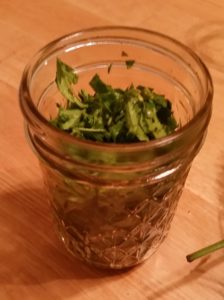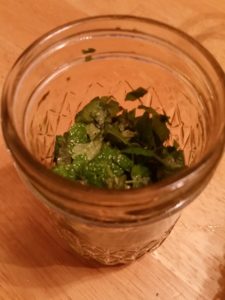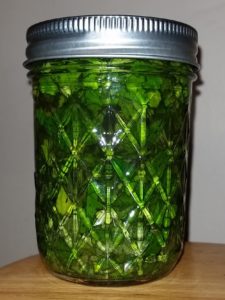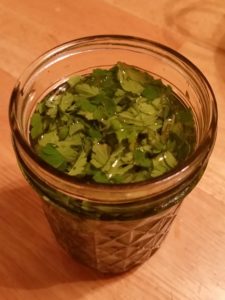The more I learn about mushrooms, the more I want to know practical ways to interact with them. You HAVE to watch this video to see some of the exciting ways mushrooms are being used.
We ordered a Pearl Oyster Mushroom Patch from Fungi Perfecti, Paul Stamet’s company.
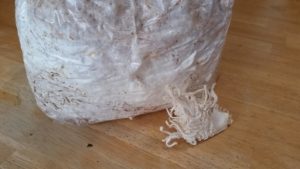
It consists of organic straw that is inoculated with Pearl Oyster mycelium. When it arrived, it looked fully colonized, and the directions state that it should start growing Pearl Oysters in 7-14 days. It had, in fact, started growing while being shipped, as you can see from the square mushroom in the picture to the right. The mushroom looks the way it does because it was not receiving enough air while in the box.
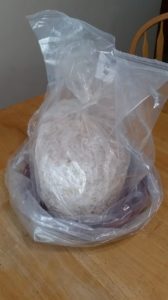
We broke off the early growth and placed the mushroom patch on a plate. This will help catch extra moisture that condenses on the bag since we need to spray it down multiple times a day.
We used purified, non-chlorinated, and non-softened water in a small spray bottle to spray the patch down. Then, we covered the patch with a humidity cover.
The mushroom patch is being left on the dining room table, so we can watch it grow and maintain consistent moisture levels.
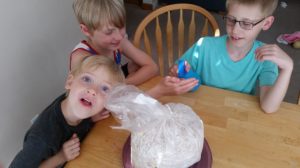
We’ll keep you posted on the progress on our Facebook page!
5 June: Primordial is starting to form on the package!
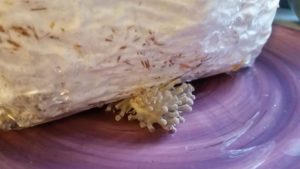
7 June: Mushrooms continuing to grow!
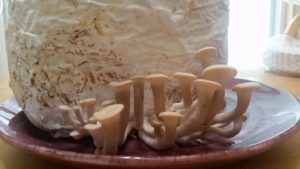
10 June: Harvested the mushrooms, cooked on 19 June.

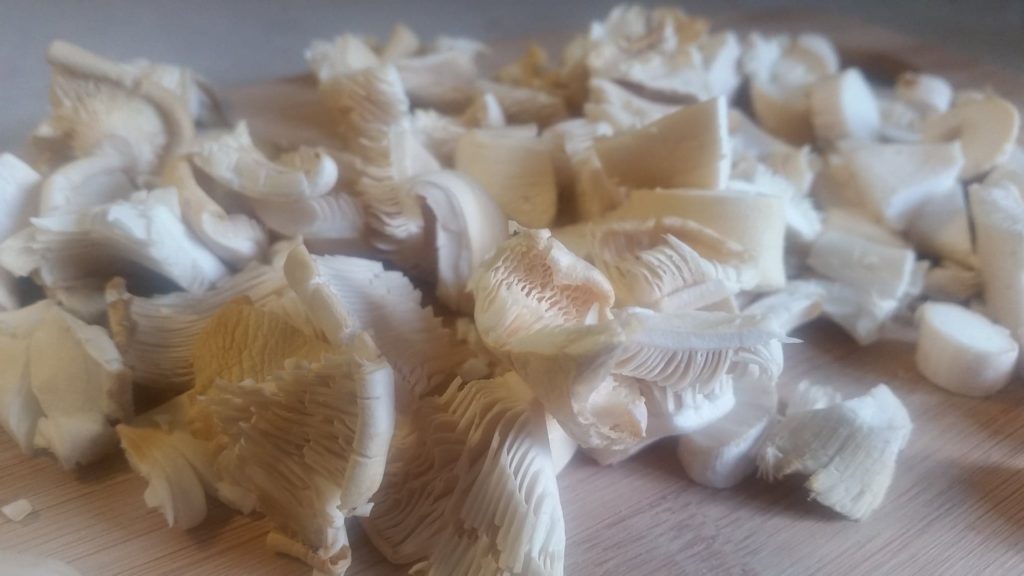
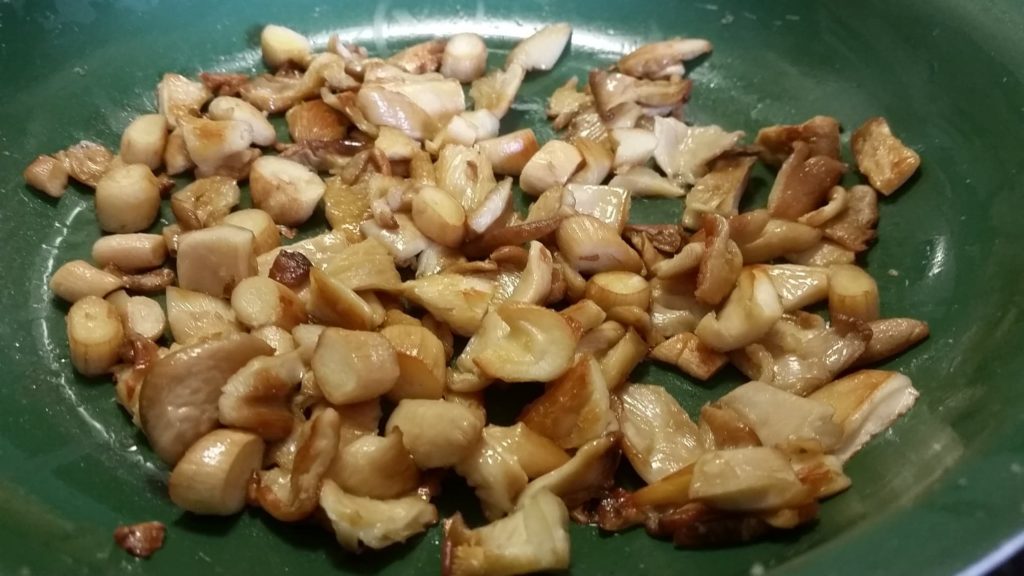
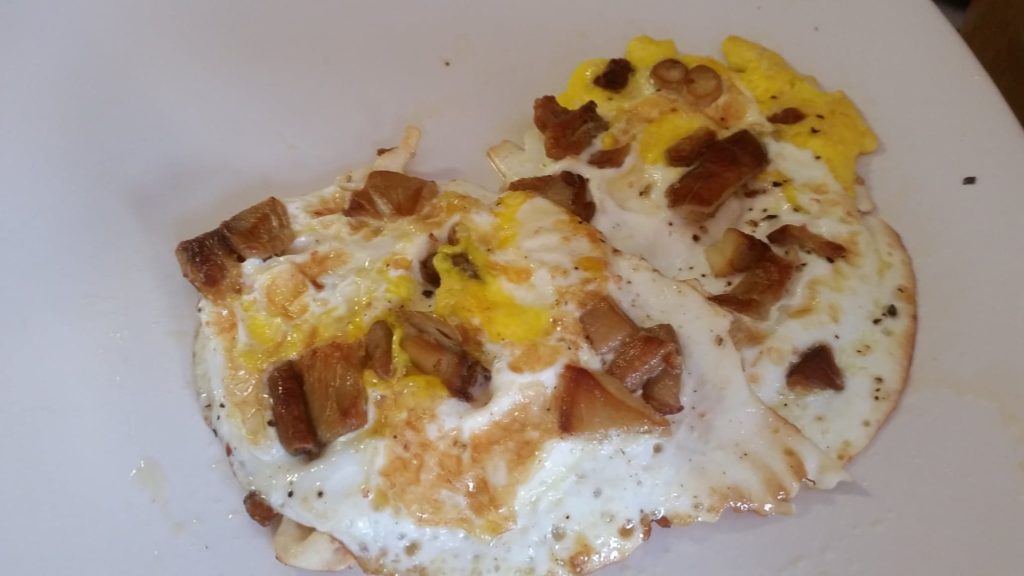

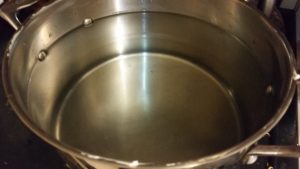


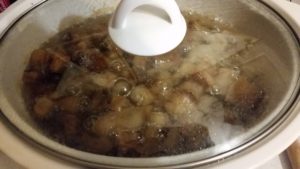 Turn the slow cooker on low, and let it cook all day or over night. As it melts, the lard becomes clear, and there will be smaller cubes of skin left over that can be used to make cracklins.
Turn the slow cooker on low, and let it cook all day or over night. As it melts, the lard becomes clear, and there will be smaller cubes of skin left over that can be used to make cracklins.

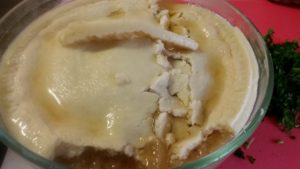
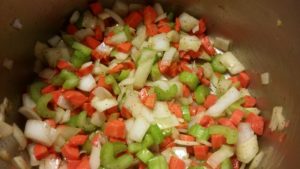 Ingredients:
Ingredients: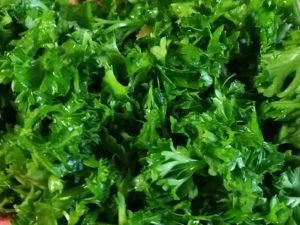
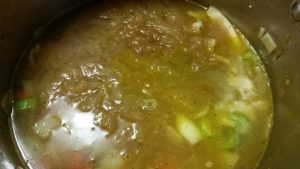
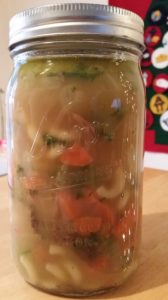
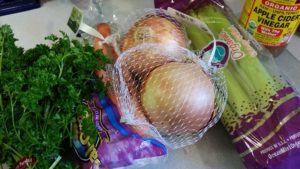 Neck bones may not seem like the most prized cut of lamb, but they are excellent for making bone broth. Any bones can be used for bone broth, but neck bones have quite a lot of meat that will come off easily during the broth making process.
Neck bones may not seem like the most prized cut of lamb, but they are excellent for making bone broth. Any bones can be used for bone broth, but neck bones have quite a lot of meat that will come off easily during the broth making process.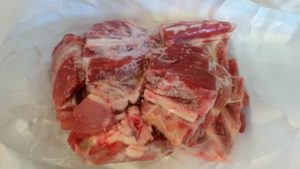
 Then, prepare the following:
Then, prepare the following: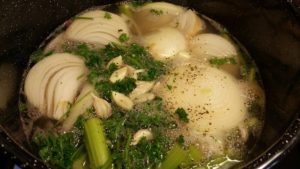 Bring the pot to a simmer. The goal is to let the bone broth simmer for at least 12 hours, but longer is better. The meat will fall off the bones, and they will turn white if allowed to simmer long enough. That means you’ve gotten all the good stuff.
Bring the pot to a simmer. The goal is to let the bone broth simmer for at least 12 hours, but longer is better. The meat will fall off the bones, and they will turn white if allowed to simmer long enough. That means you’ve gotten all the good stuff.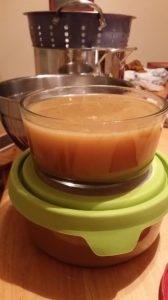 After simmering for at least 12 hours, strain the bone broth. We use a colander, so we don’t over strain it. As you ladle the bone broth into the colander, you will be separating the meat. The vegetables will be soft, or falling apart. You can feed everything that is strained out to your chickens!
After simmering for at least 12 hours, strain the bone broth. We use a colander, so we don’t over strain it. As you ladle the bone broth into the colander, you will be separating the meat. The vegetables will be soft, or falling apart. You can feed everything that is strained out to your chickens!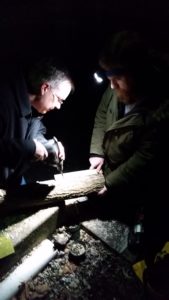 For Christmas, one of my brothers bought another brother mushroom shiitake spawn!
For Christmas, one of my brothers bought another brother mushroom shiitake spawn! 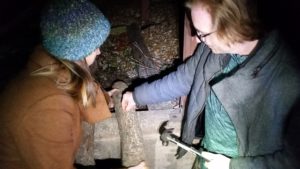 We cut 3 foot sections of walnut, then drilled holes that matched the dowel rod sizes every 2 inches in three equally spaced columns down the side of each log. Afterwards, we used a hammer to pound a dowel rod into each hole (see below).
We cut 3 foot sections of walnut, then drilled holes that matched the dowel rod sizes every 2 inches in three equally spaced columns down the side of each log. Afterwards, we used a hammer to pound a dowel rod into each hole (see below).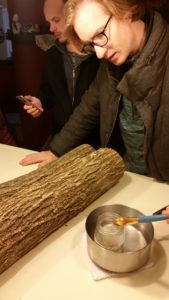 This is similar to planting young mushroom fungi into the wood, with the goal of it colonizing the log to convert it into shiitake mushrooms! The key is keeping the log moist, so it has to stay out of the sun and be watered or soaked to keep it from drying out. The last step of preparation is to seal the dowels with bees wax to slow down the drying process as much as possible.
This is similar to planting young mushroom fungi into the wood, with the goal of it colonizing the log to convert it into shiitake mushrooms! The key is keeping the log moist, so it has to stay out of the sun and be watered or soaked to keep it from drying out. The last step of preparation is to seal the dowels with bees wax to slow down the drying process as much as possible.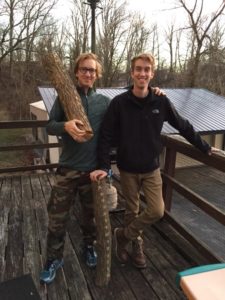 After the log has been fully colonized (~6 months), we will force the log to fruit by soaking it for 24 hours in water, then keeping them around 70 degrees. They should fruit about a week later.
After the log has been fully colonized (~6 months), we will force the log to fruit by soaking it for 24 hours in water, then keeping them around 70 degrees. They should fruit about a week later.